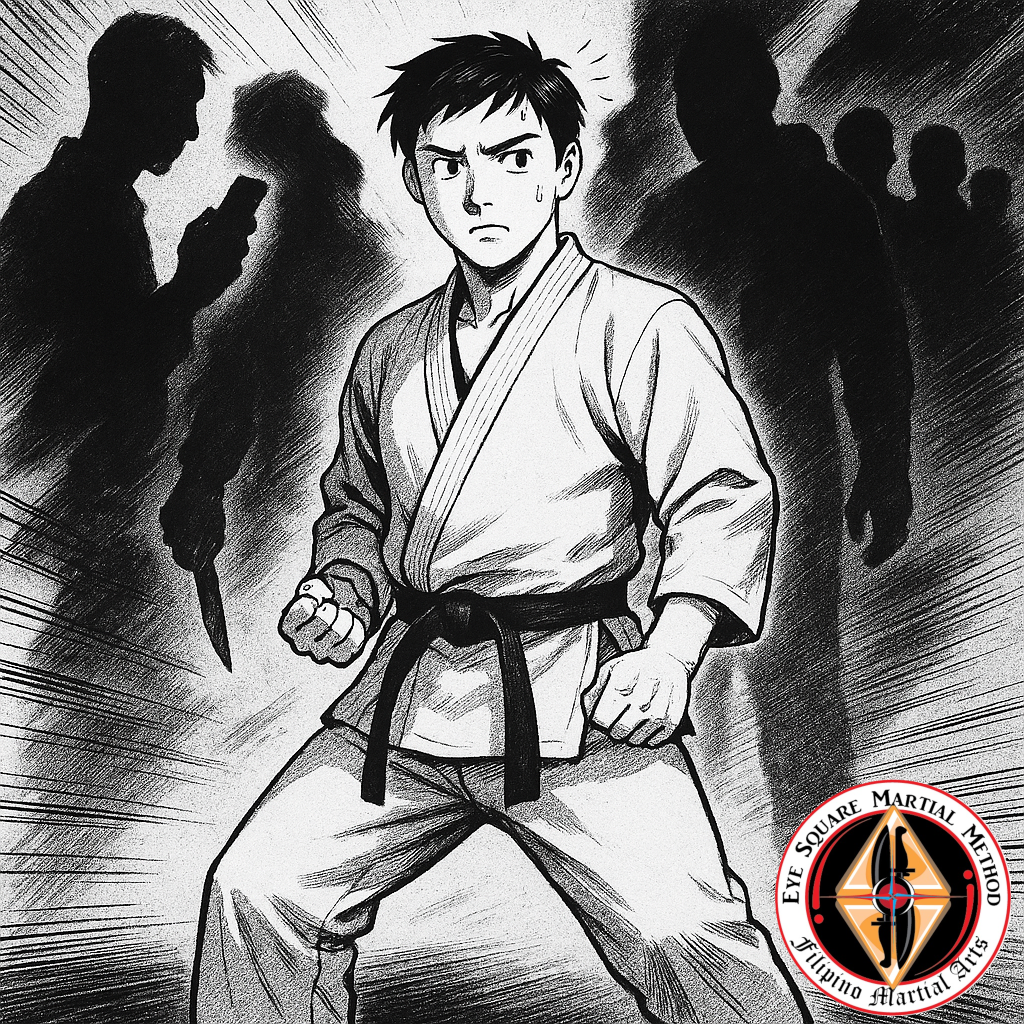You’ve logged the hours, earned the stripes, and memorized every kata in the book—but real violence isn’t choreographed. Even the most skilled martial artist can be surprised, overwhelmed, or outmaneuvered. Believing otherwise sets you up for a hard lesson. Here’s why no amount of training makes you bullet-proof—and how to build true resilience instead.
1. The Origin of the “Invincibility” Myth
- Pop-Culture Power Fantasy
Movies and comics love the trope: our hero deflects bullets with a flick of the wrist, fights off a dozen attackers single-handedly, or walks away unscathed from a steel pipe to the face. - Rank and Status
In some traditional schools, high rank is conflated with unbeatable prowess—black belts become living talismans rather than students of a dynamic art.
While these stories are entertaining, they distort the reality of unplanned, unscripted violence.
2. Why Real Violence Is Nothing Like the Dojo
- Element of Surprise
- Hidden Weapons: A tiny blade, broken bottle, or blunt object can neutralize reach and skill advantages in an instant.
- Multiple Attackers: Facing more than one opponent breaks down the “one-on-one” scenarios you practice in.
- Chaos and Stress
- Adrenaline Dump: Under extreme stress, fine motor skills degrade. Techniques you’ve drilled a thousand times can vanish.
- Environmental Hazards: Slippery ground, low light, confined spaces, or bystanders create variables that training partners rarely mimic.
- Legal and Ethical Constraints
- Use-of-Force Law: Even life-or-death situations have legal boundaries. A perfectly executed “defensive” technique can land you in court if it’s deemed excessive.
- Moral Hesitation: Most of us hesitate before striking with full force—real attackers often won’t.
3. The Danger of Overconfidence
- Undertraining Critical Skills
Focusing exclusively on flashy techniques or forms can leave gaps in situational awareness, escape tactics, and weapon defense. - Ignoring the Rules of Engagement
Thinking you’re invincible can lead to taking unnecessary risks—asking for trouble rather than avoiding it. - Mental Rigidity
Clinging to a fixed set of “approved” moves makes you predictable. Real self-defense demands adaptability.
4. Training for True Resilience
Rather than chasing an illusion of invincibility, cultivate skills and habits that translate to messy reality:
- Scenario-Based Drills
- Practice low-light or no-light sparring.
- Simulate ground-fighting from a seated or bent-over position.
- Incorporate multiple “bad-guy” teammates to force decision-making under pressure.
- Weapon Awareness and Defense
- Train with simple improvised weapons (sticks, umbrellas, belts).
- Drill disarms against blunt objects before moving on to edged-weapon training.
- Stress Inoculation
- Add mental challenges (e.g., push-ups or mental math) mid-drill to simulate fatigue and cognitive load.
- Use protective gear to allow controlled contact, so you learn to protect under realistic impact.
- Escape and Evade
- Learn basic break-holds and leverage-based escapes from common grabs.
- Emphasize footwork drills that teach you to create space rather than meet force with force.
- Legal and Ethical Education
- Understand your local self-defense laws.
- Role-play verbal de-escalation and boundary-setting techniques.
5. The Real Path to Confidence
True confidence doesn’t come from believing you can’t be hurt—it comes from knowing how to recognize danger, minimize risk, and respond effectively when things go sideways. A well-rounded martial artist blends technical skill with:
- Perceptual Awareness (“reading” crowds, body language, and micro-threats)
- Physical Conditioning (endurance, core strength, mobility)
- Mental Preparedness (stress management, decision-making under duress)
Conclusion
Martial arts can sharpen your body and mind—but it doesn’t grant a magic shield. The false promise of invincibility is a trap: it lulls you into complacency and blind spots. Instead, embrace realistic training, continuous learning, and humility. That’s how you transform genuine skill into real-world self-preservation.


Leave a Reply